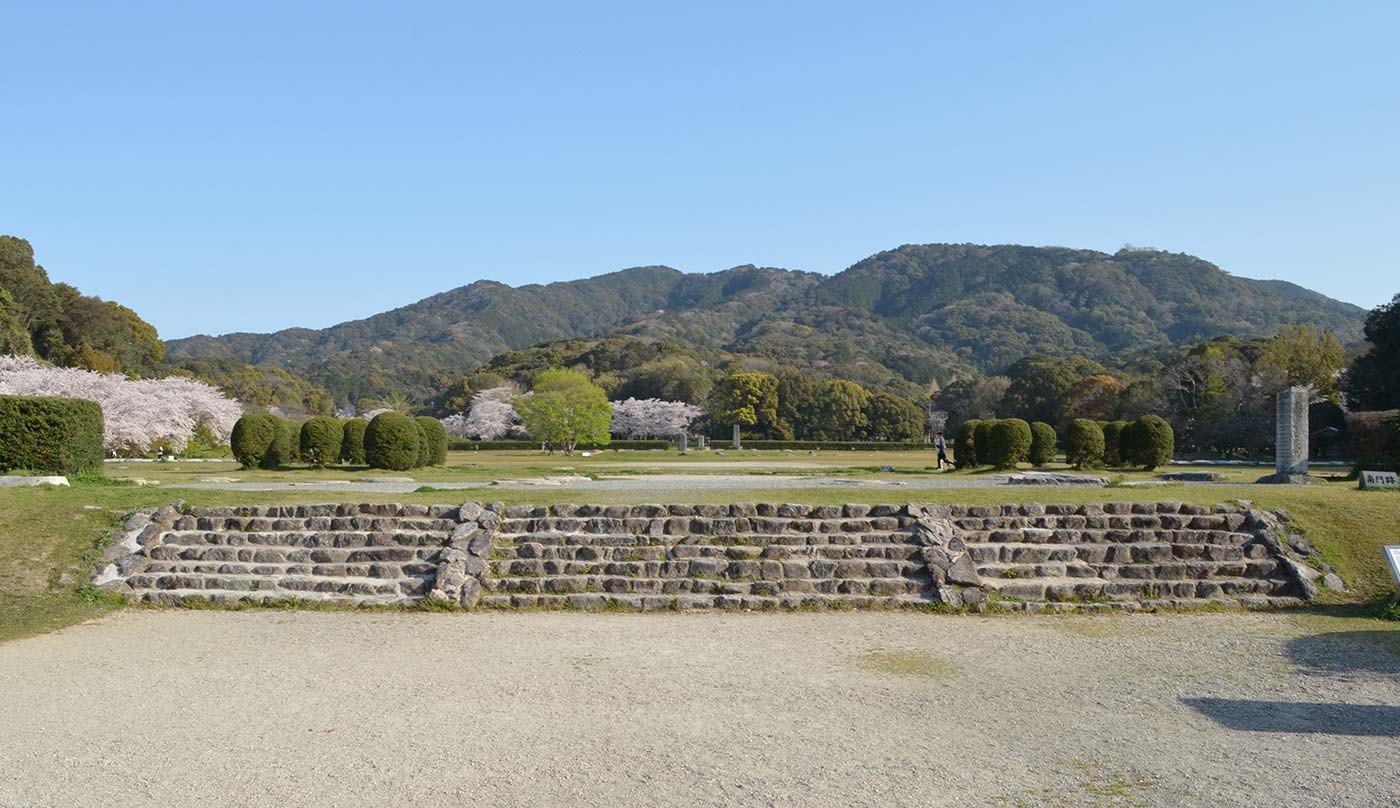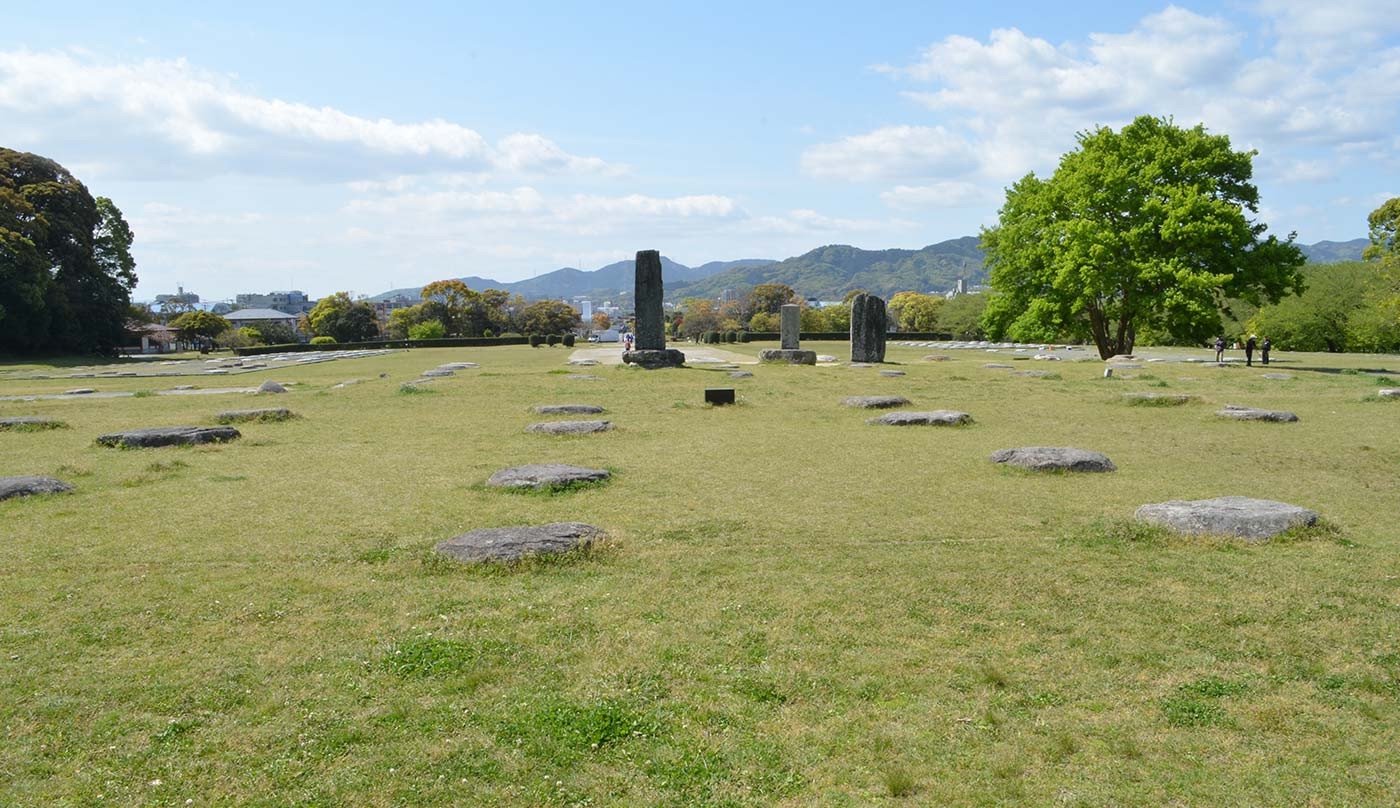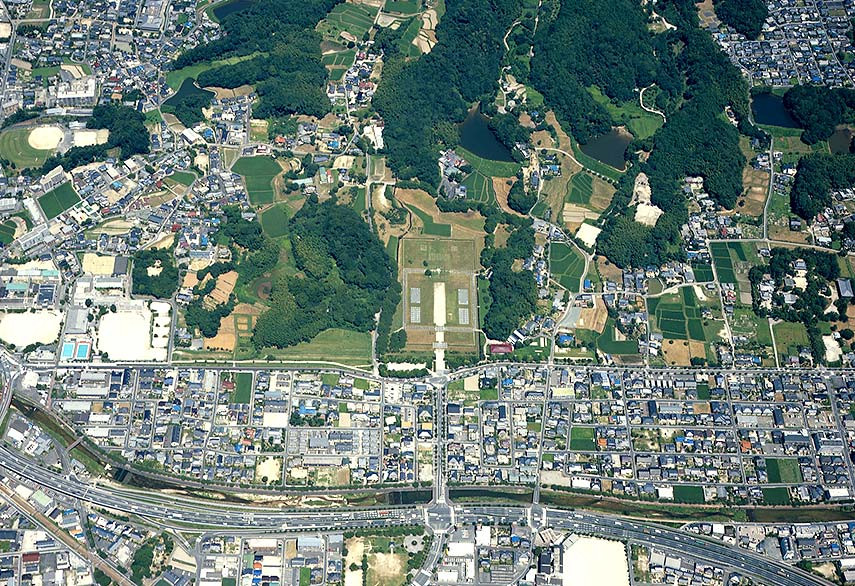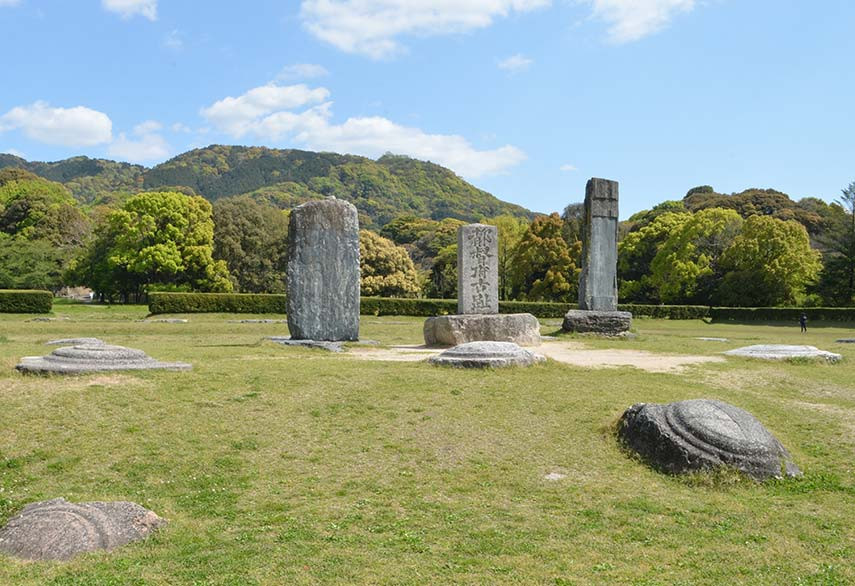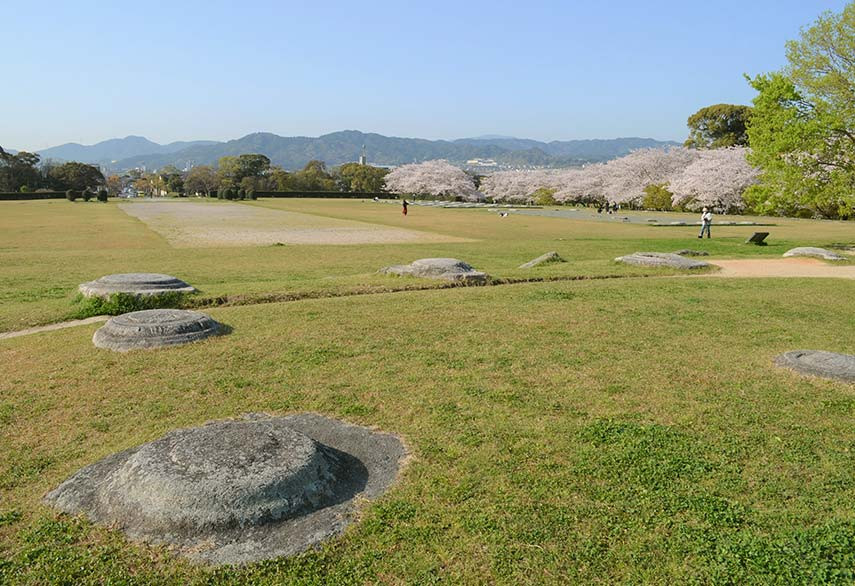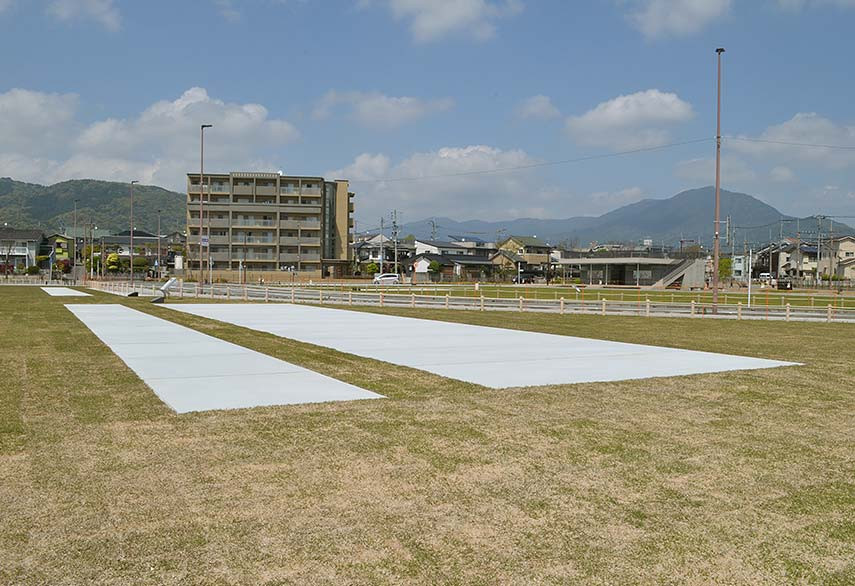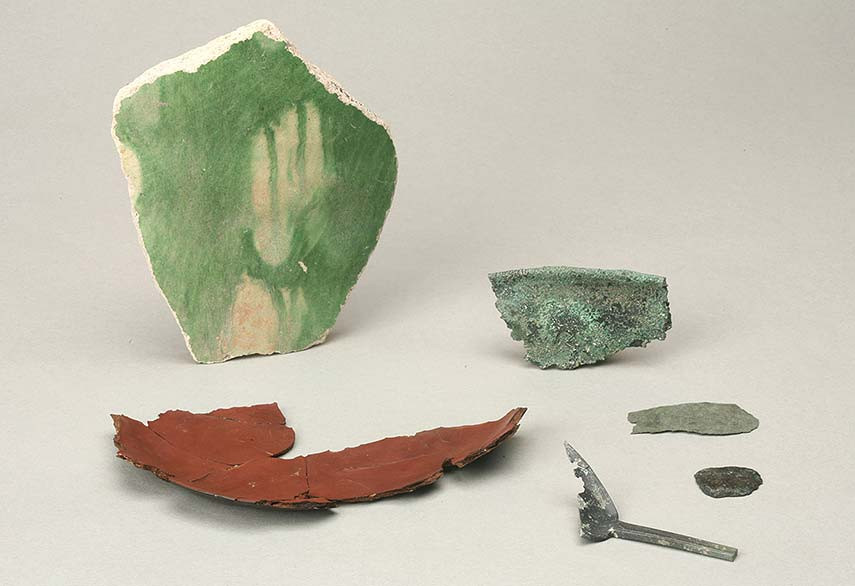
Dazaifu Ruins
| Location | City of Dazaifu |
|---|---|
| Designation | National Special Historical Site |
| Emblem |  |
This was the center of politics and culture in Kyushu, and also the core of Dazaifu, which was at the frontier of Japanese diplomacy and defense. Established 1300 years ago, it is composed of a government office built in Chodo-in style (similar to Heijo-kyu Palace), related offices and a guest house used to welcome foreign delegations. Many of the officials assigned to Dazaifu were those who actively worked in the international arena, such as Japanese envoys to the Tang Dynasty. This place offers a perfect setting where visitors can lose themselves in an ancient era.
A Central Facility Symbolizing Dazaifu
Located at the center of Dazaifu, called the “Distant Imperial Court”, this is where government affairs and ceremonies were held in Dazaifu. The building layout resembles that of a palace in the capital, with a large stone-paved garden stretching from the south to the southern and middle gates, a main hall in the front one step higher than its surroundings, two halls each on both the left and right sides, all surrounded by a cloister. It is believed that there was a rear hall behind the main hall and a north gate further to the north. These facilities took on this form in the first half of the 8th century, using the same sophisticated tile patterns as were used in the capital for the roofs. Even after it was burned down during the rebellion of Fujiwara no Sumitomo in 941, it was rebuilt in almost the same form and has been maintained as an area symbolic of the dignity of the “Distant Imperial Court”. Surrounded by various government offices, the area surrounding the Dazaifu Government Office served as an administrative district.
A Guesthouse Welcoming Foreign Envoys
Dazaifu was a place of diplomacy with foreign lands and as such often entertained foreign envoys. Excavations along Suzaku Avenue have revealed the existence of state guesthouses in this “Western Capital” dating from the 8th century to the first half of the 9th century. One area surrounded by grid-shaped roads is lined with large buildings running north to south where copper tableware, lacquerware, Sansai pottery, and other high-class tableware has been excavated, showing that guests were entertained with luxurious dinners It is believed that foreign ambassadors would have dressed themselves here, then proceeded to the Dazaifu Government Office to perform ceremonies. State guesthouses were located on the east and west sides of Suzaku Avenue in Ancient Kyoto as well, showing that the city planning of Dazaifu was the same as the capital.

Dazaifu City Characters/Tabito the Traveler, Otomo no Tabitto, Princess Reiwa
The best way to get to the Dazaifu site is to walk from Nishitetsu Futsukaichi Station.
The state guesthouse sites are about 3 or 4 minutes from the East Exit. At the observatory here, you will find pamphlets on Japan Heritage and the state guesthouse site.
From here, walk north about 15 minutes to get to the Government Office site. Along the way, stop by the South Hall Ruins (currently Enokisha) where Sugawara no Michizane once lived, or by the Suzaku Gate Cornerstone alongside the Mikasa River at the intersection of Suzaku Avenue. The area around the Government Office site has plenty to see, including the Dazaifu Exhibition Hall and Sakamoto Hachiman Shrine.
Dazaifu City Wi-Fi, a public Wi-Fi network, is available at the Government Office Site and the state guesthouse site. Also, feel free to view in VR using the free smartphone application “Dazaifu, the Western Capital”. See the magnificent facility it once was. (Compatible with iOS and Android)
Access Information
818-0101 4-6 Kanzeonji, Dazaifu, Fukuoka
About 20 min on foot from Nishitetsu Futsukaichi Station


About the Western Capital
The “Western Capital”, created in Tsukushi 1300 years ago. Cultural assets speaking to the magnificence of this city of international exchange that flourished in East Asia are scattered across the cities of Chikushino, Kasuga, Onojo, Dazaifu, Nakagawa, and Umi in Fukuoka Prefecture as well as the town of Kiyama in Saga Prefecture.


